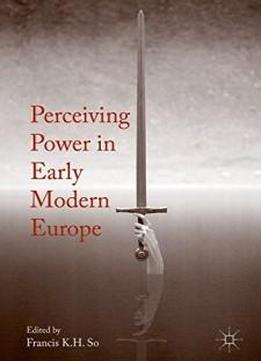
Perceiving Power In Early Modern Europe
by Francis K.H. So /
2016 / English / PDF
2.5 MB Download
This collection conceptualizes the question of rulership in past
centuries, incorporating such diverse disciplines as archaeology,
art history, history, literature and psychoanalysis to illustrate
how kings and queens ruled in Europe from the antiquity to early
modern times. It discusses forms of kingship such as
client-kingship, monarchy, queen consort and regnant queenship that
manifest gubernatorial power in concert with paternal succession
and the divine right of the king. While the king assumes a
religious dimension in his obligatory functions, justice and peace
are vital elements to maintain his sovereignty. In sum, the active
side of governmental power is to keep peace and order leading to
prosperity for the subjects; the passive side of power is to
protect the subjects from external attack and free them from fear.
These concepts of power find concurrence in modern times as well as
in non-European cultures. Through a truly cross-cultural,
transnational, multidimensional, gender-conscious and
interdisciplinary study, this collection offers a cutting edge
account of how power has been exercised and demonstrated in various
cultures of some bygone eras.
This collection conceptualizes the question of rulership in past
centuries, incorporating such diverse disciplines as archaeology,
art history, history, literature and psychoanalysis to illustrate
how kings and queens ruled in Europe from the antiquity to early
modern times. It discusses forms of kingship such as
client-kingship, monarchy, queen consort and regnant queenship that
manifest gubernatorial power in concert with paternal succession
and the divine right of the king. While the king assumes a
religious dimension in his obligatory functions, justice and peace
are vital elements to maintain his sovereignty. In sum, the active
side of governmental power is to keep peace and order leading to
prosperity for the subjects; the passive side of power is to
protect the subjects from external attack and free them from fear.
These concepts of power find concurrence in modern times as well as
in non-European cultures. Through a truly cross-cultural,
transnational, multidimensional, gender-conscious and
interdisciplinary study, this collection offers a cutting edge
account of how power has been exercised and demonstrated in various
cultures of some bygone eras.











